You may of heard of the trickle-down theory before. It is an important concept to understand and deepen your knowledge of the fashion industry. Whether you aim to aspire to be a fashion writer, buyer or designer, it’s important to recognise the theories in fashion and have a knowledge of the industry and its history. Having this knowledge not only proves to recruiters you know the industry, but will help you become better at your job. Whether it is to help add depth to your articles, add context and meaning behind purchase decisions or design with an awareness of what came before and how fashion works. There are many theories of fashion, however, the trickle-up theory is the most important to consider for any role in the industry.
The trickle-down theory examines the way trends filter through society. A trend can be found in any area of human culture from art to aesthetics. Although the way trends are formed and the way we adapt to them has changed over the years, the core principle remains the same. The trickle-down theory is a downward flow, it is when a trend essentially ‘trickles’ down throughout society. It is dependent on society, class and social levels. Meaning trends start with the ‘innovators/first adopters’ which are the richest upper-class part of society. Such as the royal family, celebrities, film stars or top fashion designers. The trend then filters through to the early adopters which in today’s digital world would be the influencers or more celebrities. This then leads to the new trend becoming emulated by fast fashion brands and landing in our wardrobes; the general public. The trickle-down theory leaves us at the bottom of the chain to admire the couture catwalks.
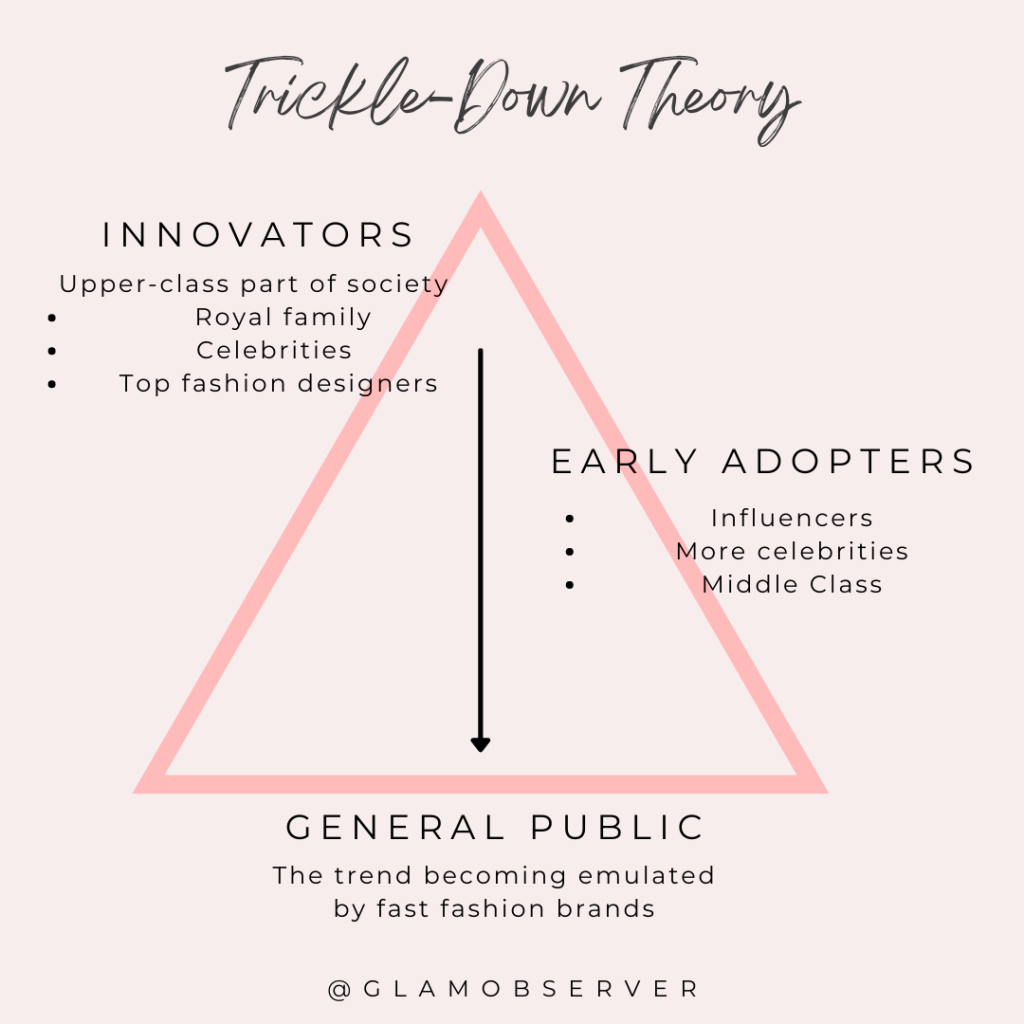
You may have often noticed brands such as Pretty Little Thing producing a ‘copy’ of the latest couture show such as Chanel or Balenciaga, with just weeks of turnover for it to land in our closet. This is the trickle-down theory in action. Admiration of the glamorous, wealthy lifestyle is something that existed long before social media. Fashion and style of the higher social positions have always trickled down. The trickle-down theory was first noted back in the 19th century. Fashion trends and new curations began on the runway appealing to the rich and wealthy who acquired the money to purchase and wear these new desirable looks. Fashion shows were once intimate and only open to clients, unlike today where anyone can watch the latest live stream catwalk at a push of a button.
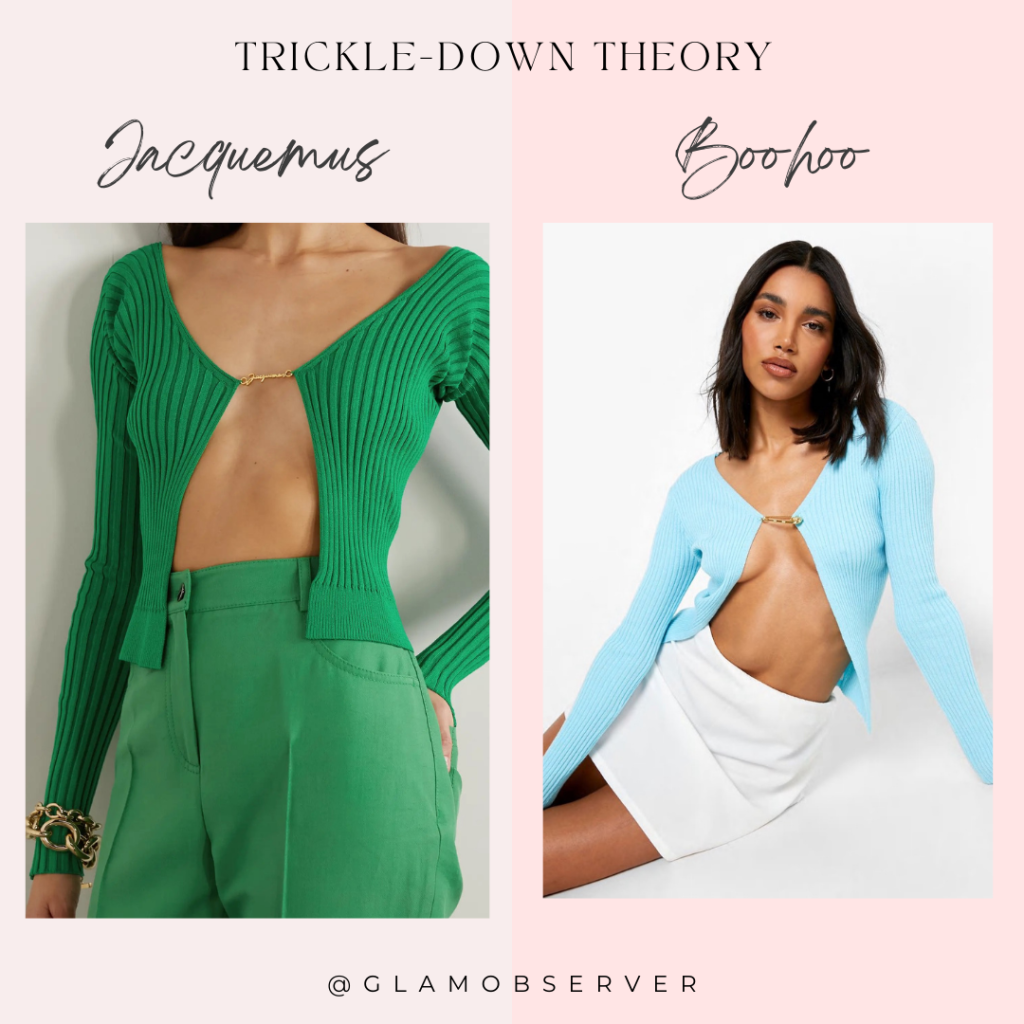
As the elaborate garments were worn and open to the public eye, the psychology of desiring the rich and famous was just the same. The general public and high street fashion looked up to the upper class for style. And just like today, the fashion ideation becomes available to all, at lower price points through high street retailers. However, back in the day, there was no fast fashion or mass production, so the time a trend would take to trickle down would be a lot longer. We are so used to seeing a trend turn off the catwalk on to boohoo.com in a week. We forget fashion did not always exist in such a demanding way. Chanel was actually one of the first designers to start curating her pieces in cheaper fabrics to make her garments accessible to all women. As the woman who changed fashion forever, she believed all women deserved to feel good, not just the rich.
We have all witnessed the modern examples of the trickle-down theory. From Kim Kardashian’s powerful influence to fast fashion companies emulating the latest catwalk trends of the season. An example of a past trend that trickled down would be from royal influence. King George the third was renowned for wearing a 3 piece suit. Which we still see today! Men at weddings or fancy occasions will include a waistcoat in their outfits. The trend that trickled down centuries ago became a classic trend of the waistcoat we still wear today.
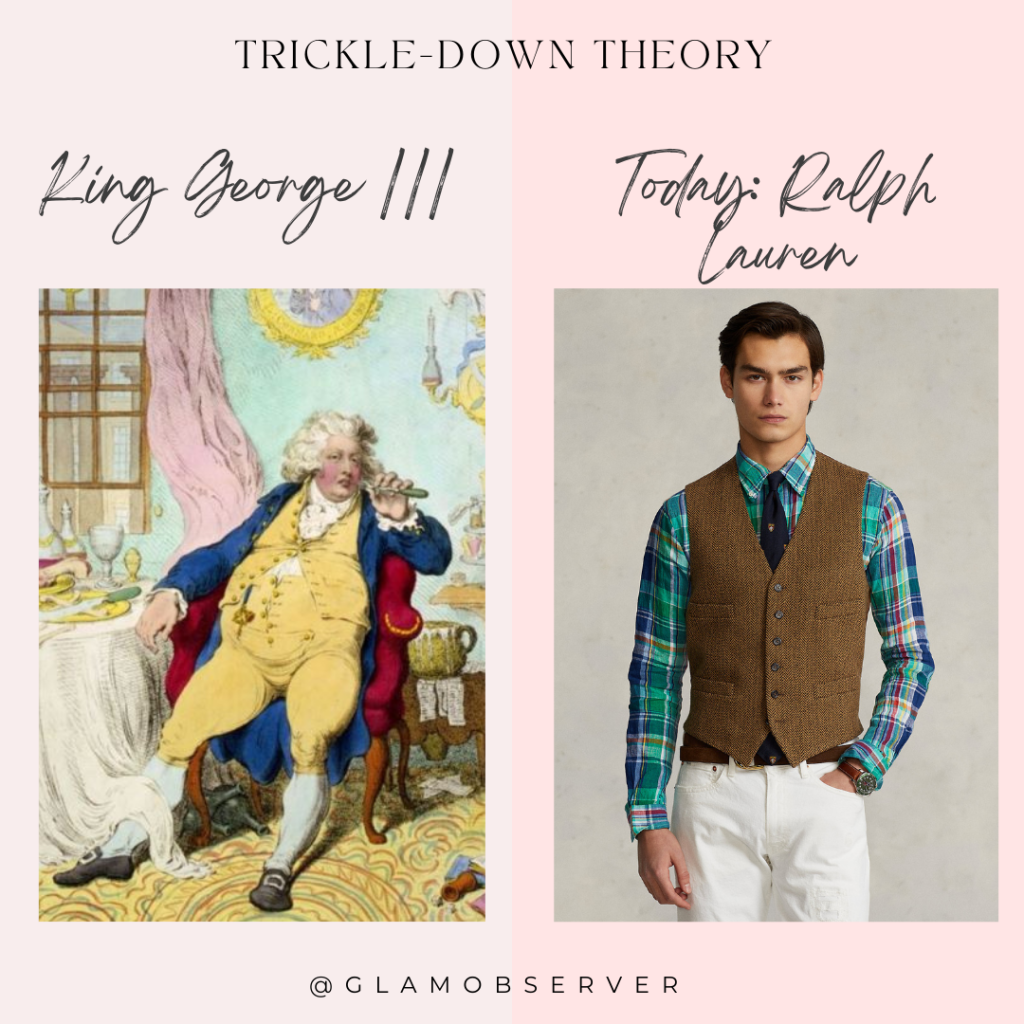
A trend’s life cycle is monitored by trend forecasters. There are many factors that can dictate if a trend will become a fad or make it to a classic. From observability to social status, society’s opinions and values decide the desire for a trend. From classics such as the LBD or the trench coat to fads, you will remember such as jelly shoes or cut out jeans. A fad will only affect a smaller section of society has a short, novelty lifespan, whereas a classic trend is here forever.
Although the fashion industry runs smoothly along the trickle-down theory and has for centuries, there are times where fashion has trickled up. This is when an innovation is initiated among society to form a new trend, which is then in turn copied by designers. Which completely throws the fashion system off course! As the structure of fashion as we know it, the designers create the pieces that we wear. However, the trickle-up theory completely denies this. A great historical example of this is the punk movement! Society began tearing their clothes, writing fun slogans and getting creative with safety pins and prints. This was completely initiated by the wider society which then was emulated on the runway by designers.
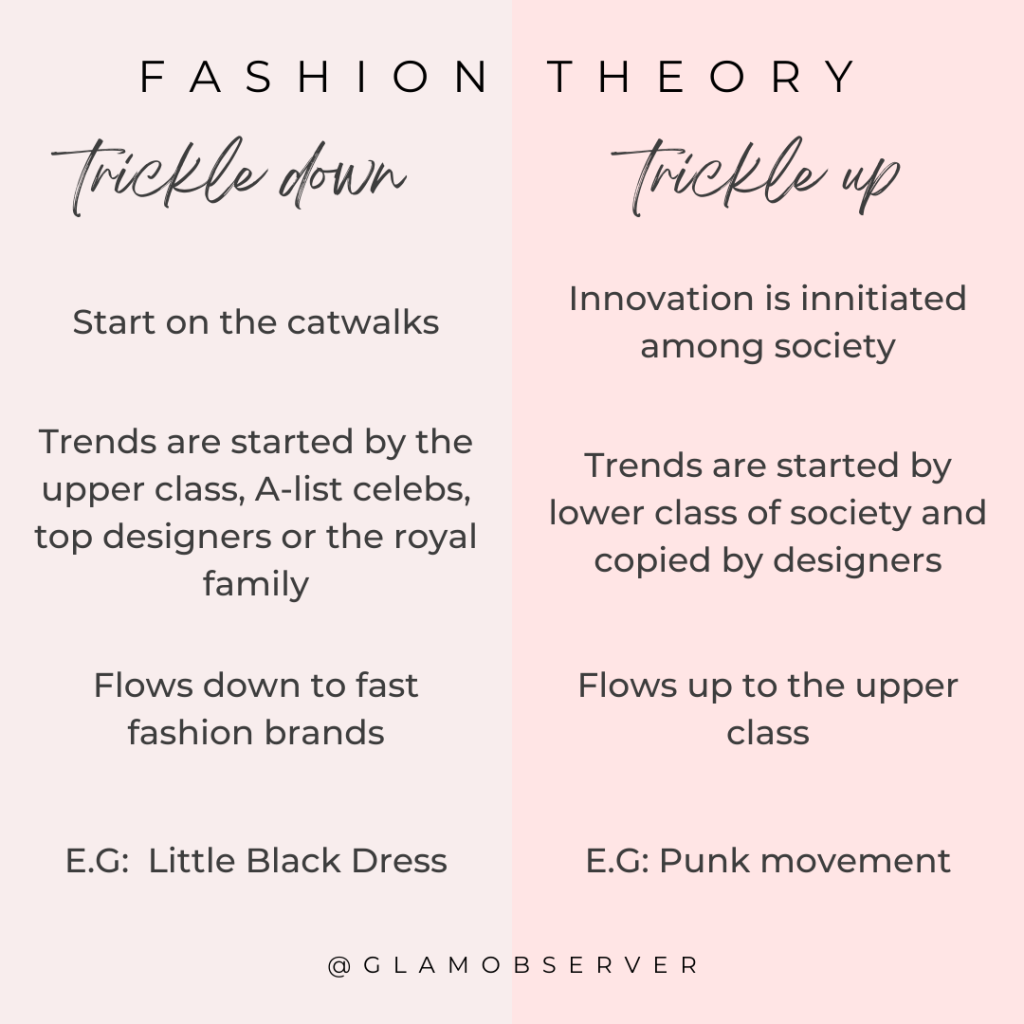
We’re already seeing low waisted skirts come back in fashion after Miu Miu’s debut right? The trickle-theory is so important to know within the fashion industry to have a basic knowledge of trends and how they form. To learn more about the history of fashion and inside the industry, enrol into our course.
Are you considering a career in fashion? Register for our free masterclass here to learn 3 out-of-the-box strategies to get a job in fashion quickly.




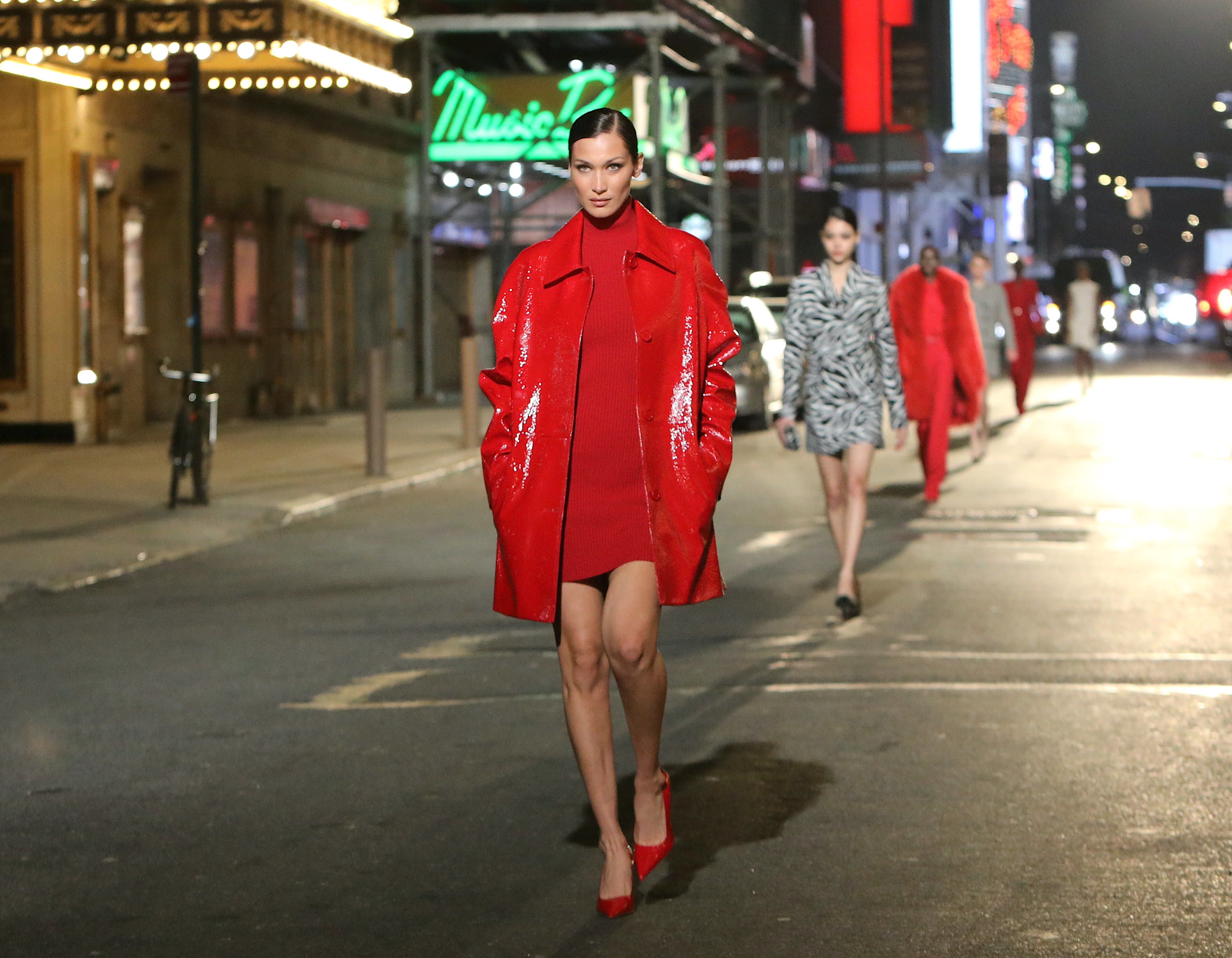
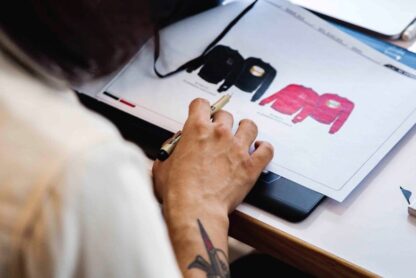
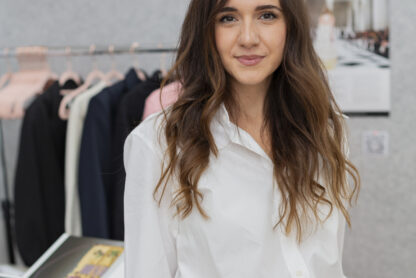
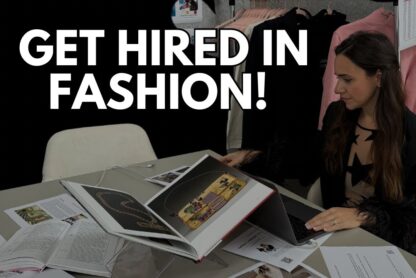
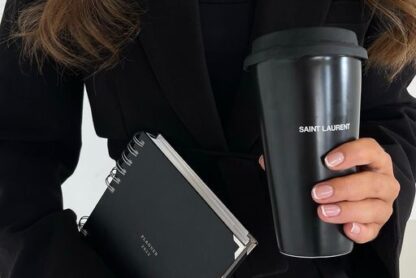
give description about trickle up theory also
Hello Dear,
Hope you are doing well
I want publish the article at your website https://glamobserver.com/
What is your post price?
Waiting for your kind response
Thank you So Much
complextotech.blogspot.com